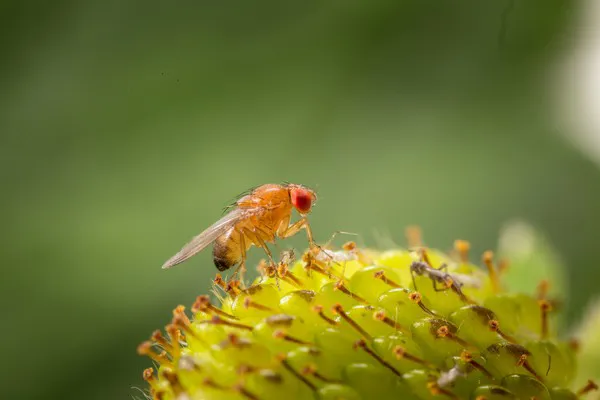The technical department of Koppert Spain recommends berry producers to immediately start installing traps for the biological control of the Drosophila suzukii fruit fly. Their recommendation is based on the evolution of meteorological conditions and the degree of development of crops, especially in Huelva.

Adult Drosophila suzukii on strawberry.
This biological control strategy against this fruit fly is most effective when carried out before the first fruits ripen. Koppert offers berry producers a strategy based on the joint use of the Fruit Fly Attractant® food bait with the Drosoan® trap. Fruit fly adults are attracted to Fruit Fly Attractant® and enter the Drosoan® trap. Once inside, they become trapped and drown.
The Drosoan® trap has a special red color design that significantly increases the number of catches, compared to other traps available on the market. Additionally, Drosoan® only captures adult Drosophila suzukii flies because it is equipped with a selective mesh that does not capture other insects or pollinators.
The biological control strategy developed by Koppert for the biological control of this fruit fly is also effective in other crops, such as strawberry, grape, cherry, plum, peach, fig, persimmon, and kiwi, among others.
Native to Asia, the Drosophila suzukii fly, also known as the speckled-wing fly, is a pest that causes significant losses to the berry, strawberry, and thin-skinned fruits agricultural sectors. Females search for ripe fruit to lay eggs. The larvae cause damage to the fruit by feeding on it and by facilitating the entry of other diseases.
For more information:
Koppert![]()
C/ Cobre 22, Pol. Industrial Ciudad del Transporte del Poniente, C.P. 04745. La Mojonera. Almería
Tel.: +34 950 55 44 64
Fax: +34 950 55 39 05
[email protected]
www.koppert.es








